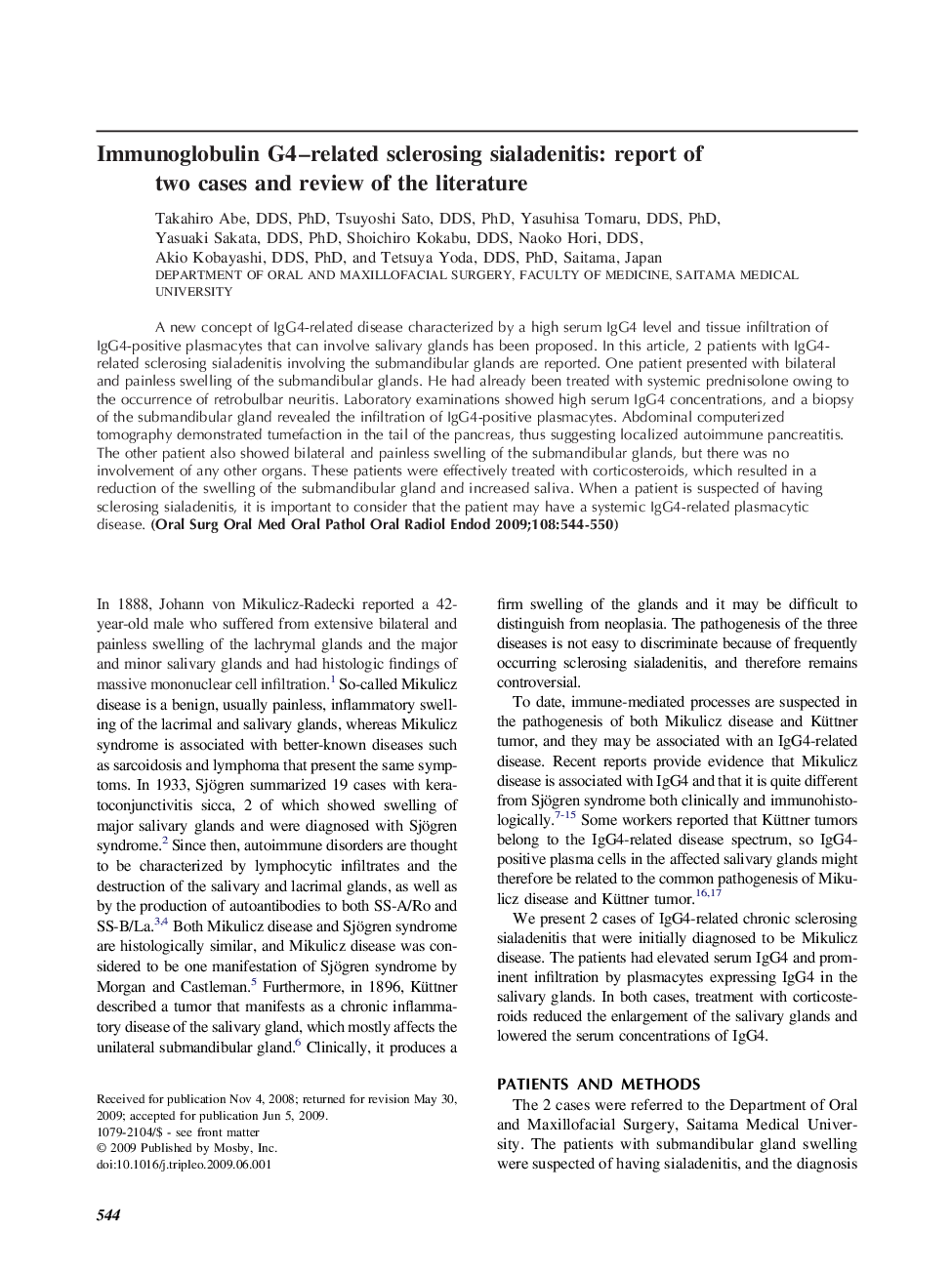| Article ID | Journal | Published Year | Pages | File Type |
|---|---|---|---|---|
| 3167919 | Oral Surgery, Oral Medicine, Oral Pathology, Oral Radiology, and Endodontology | 2009 | 7 Pages |
A new concept of IgG4-related disease characterized by a high serum IgG4 level and tissue infiltration of IgG4-positive plasmacytes that can involve salivary glands has been proposed. In this article, 2 patients with IgG4-related sclerosing sialadenitis involving the submandibular glands are reported. One patient presented with bilateral and painless swelling of the submandibular glands. He had already been treated with systemic prednisolone owing to the occurrence of retrobulbar neuritis. Laboratory examinations showed high serum IgG4 concentrations, and a biopsy of the submandibular gland revealed the infiltration of IgG4-positive plasmacytes. Abdominal computerized tomography demonstrated tumefaction in the tail of the pancreas, thus suggesting localized autoimmune pancreatitis. The other patient also showed bilateral and painless swelling of the submandibular glands, but there was no involvement of any other organs. These patients were effectively treated with corticosteroids, which resulted in a reduction of the swelling of the submandibular gland and increased saliva. When a patient is suspected of having sclerosing sialadenitis, it is important to consider that the patient may have a systemic IgG4-related plasmacytic disease.
